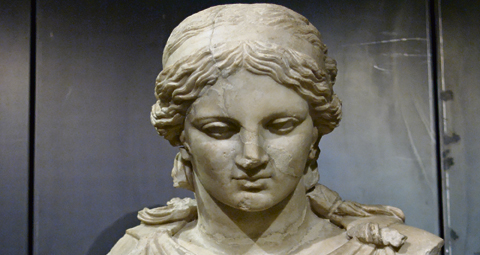October 24 | ![]() 0 COMMENTS
0 COMMENTS ![]() print
print

We can draw spirituality from chastity
By Fr Ronald Rolhesier
Ancient Greece expressed much of ts psychological and spiritual wisdom inside their myths. They didn’t intend these to be taken literally or as historical, but as metaphor and as an archetypal illustration of why life is as it is and how people engage life both generatively and destructively.
Many of these myths are centred on gods and goddesses. They had gods and goddesses to mirror virtually every aspect of life, every aspect of human behaviour, and every innate human propensity. Moreover, many of these gods and goddesses were far from moral in their behaviour—especially in their sexual lives. They had messy affairs with each other and with human beings. However, despite the messiness and amorality of their sexual behaviour, one of the positive features inside these myths was that, for Ancient Greece, sex was always, somehow, connected to the divine. Even temple prostitution was somehow related to accessing the fertility that emanated from the divine realm.
Within this pantheon of gods and goddesses there was a particular goddess named Artemis. Unlike most of their other goddesses—who were sexually promiscuous—she was chaste and celibate. Her sexual abstinence represented the place and the value of chastity and celibacy. She was pictured as a tall, graceful figure, attractive sexually, but with a beauty that, while sexual, was different from the seductive sexuality of goddesses like Aphrodite and Hera. In the figure of Artemis, sex is pictured as an attractive blend of solitude and integrity. She is frequently pictured as surrounded by members of her own sex or by members of the opposite sex who appear as friends and intimates, but never as lovers.
What’s implied here is that sexual desire can remain healthy and generative even while abstaining from sex. Artemis represents a chaste way of being sexual. She tells us that, in the midst of a sexually-soaked world, one can be generative and happy inside of chastity and even inside celibacy.
Perhaps even more importantly, Artemis shows us that chastity need not render one anti-sexual and sterile. Rather she shows that sexuality is wider than sex and that sex itself will be richer and more meaningful if it is also connected to chastity. Artemis declares that claiming your solitude and experiencing friendship and other forms of intimacy are not a substitute for sex but one of the rich modalities of sex itself.
Thomas Moore, in describing Artemis, writes: “Although she is the most virginal of the goddesses, Artemis is not asexual. She embodies a special kind of sexuality where the accent is on individuality, integrity, and solitude.”
As such, she is a model not just for celibates but also for people who are sexually active. For a sexually active person, Artemis is the cautionary flag that says: I want to be taken seriously, with my integrity and independence assured.
As well, Mr Moore suggests that—irrespective of whether we are celibate or sexually active—we all ‘have periods in life or just moments in a day when we need to be alone, disconnected from love and sex, devoted to an interest of our own, withdrawn and remote. [Artemis] tells us that this preference may not be an antisocial rejection of people but simply a deep, positive, even sexual focusing of oneself and one’s world.’
What’s taught by this mythical goddess is a much-needed lesson for our world today. Our age has turned sex into a soteriology, namely, for us, sex isn’t perceived as a means towards Heaven, it is identified with Heaven itself. It’s what we’re supposed to be living for.
One of the consequences of this is that we can no longer blend our adult awareness with chastity, nor with the genuine complexity and richness of sex. Rather, for many of us, chastity and celibacy are seen as a fearful self- protection, which leave one dry, sterile, moralistic, anti-erotic, sexually-uptight, and on the periphery of life’s joys.
Tied to this too is the notion that all those rich realities so positively highlighted by Artemis (above)—as well as by the classical Christian notion of chastity—namely, friendship, non-sexual forms of intimacy, non-sexual pleasures, and the need for integrity and fidelity within sex, are seen as a substitute for sex, and a second-best one at that, rather than as rich modality of sex itself.
We are psychologically and spiritually impoverished by that notion and it puts undue pressure on our sexual lives. When sex is asked to carry the primary load in terms of human
generativity and happiness it cannot help but come up short. And we are seeing that in our world today.
Of course, as Christians, we have our own goddesses of chastity, Mary, the mother of Jesus, and many women saints. Why not draw our spirituality of chastity from these women, rather than looking towards some pagan, mythical goddess? Well, for the most part, we do look to Christian models here. Moreover, I suspect that both the Virgin Mary and all of our revered virgin saints would, were she actually a real person, very much befriend Artemis.
— Fr Ronald Rolheiser is a priest and member of the Missionary Oblates of Mary Immaculate. He is president of the Oblate School of Theology in San Antonio, Texas. Visit his website at www.ronrolheiser.com











